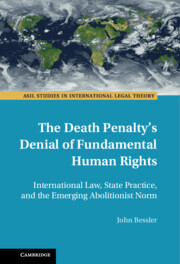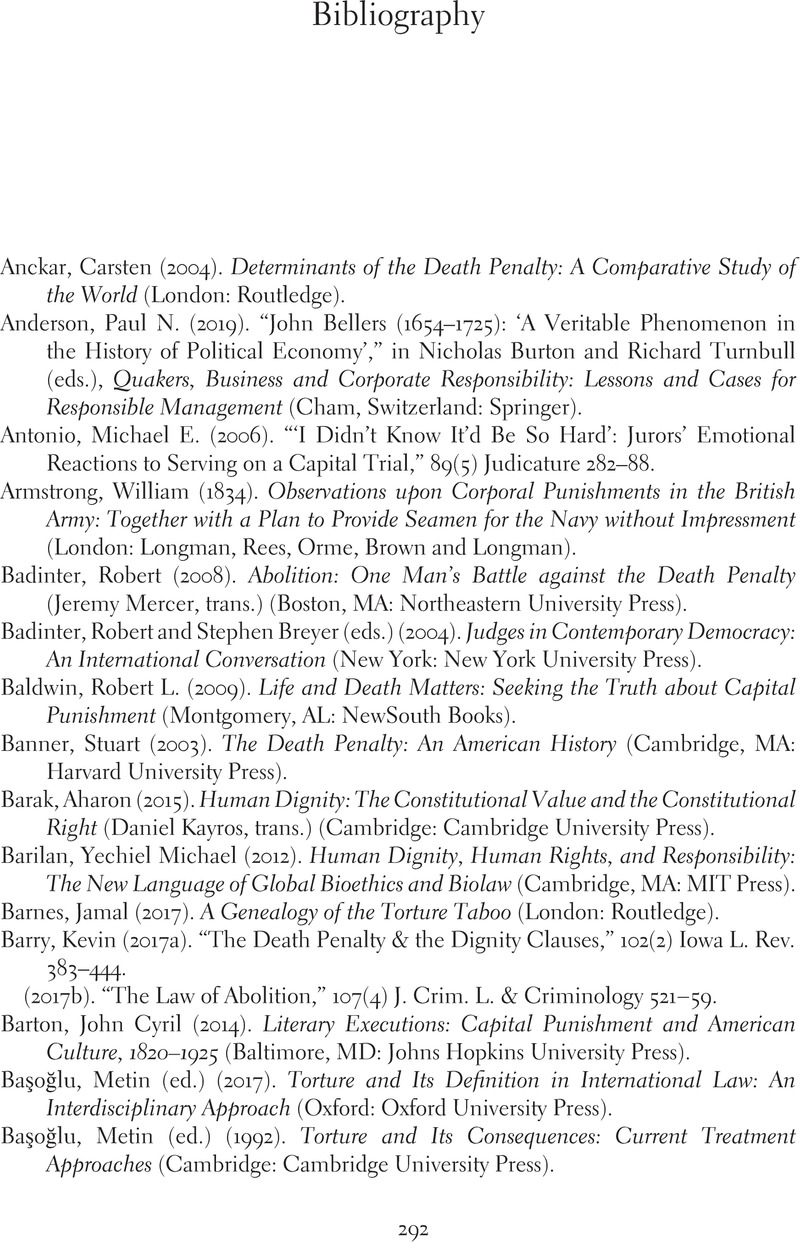 The Death Penalty's Denial of Fundamental Human Rights
The Death Penalty's Denial of Fundamental Human Rights Book contents
- The Death Penalty’s Denial of Fundamental Human Rights
- ASIL Studies in International Legal Theory
- Frontispiece
- The Death Penalty’s Denial of Fundamental Human Rights
- Copyright page
- Dedication
- Epigraph
- Contents
- Preface
- Acknowledgments
- Introduction
- 1 The Death Penalty
- 2 The Abolitionist Movement
- 3 Death Threats and the Law of Torture
- 4 Human Dignity and the Law’s Evolution
- Conclusion
- Bibliography
- Index
- References
Bibliography
Published online by Cambridge University Press: 01 December 2022
- The Death Penalty’s Denial of Fundamental Human Rights
- ASIL Studies in International Legal Theory
- Frontispiece
- The Death Penalty’s Denial of Fundamental Human Rights
- Copyright page
- Dedication
- Epigraph
- Contents
- Preface
- Acknowledgments
- Introduction
- 1 The Death Penalty
- 2 The Abolitionist Movement
- 3 Death Threats and the Law of Torture
- 4 Human Dignity and the Law’s Evolution
- Conclusion
- Bibliography
- Index
- References
Summary

- Type
- Chapter
- Information
- The Death Penalty's Denial of Fundamental Human RightsInternational Law, State Practice, and the Emerging Abolitionist Norm, pp. 292 - 306Publisher: Cambridge University PressPrint publication year: 2022
